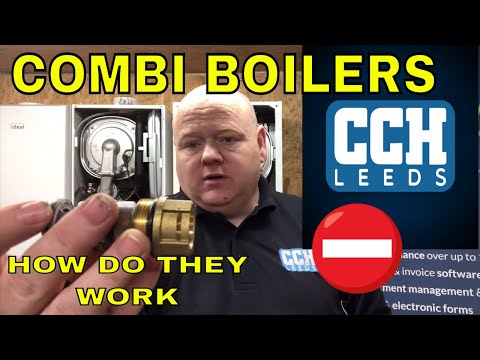#CombiBoiler Combi Boiler. Boilers, How do gas boilers work. Explaining how gas central heating boilers work. How a combi boiler works. This is going to be an in-depth video. I’m going to take the components out and I’m going to show you how they work and maybe help with fault-finding. Show you the different components in the boiler as well, from fans to gas values et cetera. Sequence, and also going to do a little bit of testing, so what I’ll do is I’ll show you how diverter valves and diverter valve head work as well. Combi Boilers.
combi boiler working principle, combi boilers explained, combi boiler sequence of operation
So it’s got a pipe at the back there, and that pipe there goes into the heat exchanger and it goes round here and down here, and that will go round the heating, and when you run your hot tap, again, more or less the same idea. What you’ve got, the pump will run again, but what I’ll done now, I’ll just zoom in, and I’ll just show you because we need to have a sensor that senses that you’ve opened the hot tap. So I’ll just show you that now.
So I’ve just removed the pump now, so we can see that what we’ve got there, we’ve got a Hall Effects sensor there. We’ll just take that off, and that, what that does is, as that spins in there, it sends a signal to there, and then that tells the boiler to work, so that’s telling us that we’ve got a flow through the boiler. What I’ll do now, I’ll just go inside and I’ll show you that on a live boiler, I’ll show you how that works.
So at the back of this boiler here, we’ve got a boiler sensor, and if you see there look, it’s just lit up so we can run the hot tap. Just turn the hot tap back off Luke, and then when we turn the hot tap off, we can see it’s gone back off again.
So that’s the Hall Effect sensor, and that would be on there, and then what happens is, your cold water mains comes into here. This senses it, this turns round, it gives like a magnetic field on here and that tells the boiler, tells the boiler to work. So that would be in there, so that’s told the boiler to work now. So we’ve got cold water gong through here. Now the difference now is we wouldn’t want to mix the central heating water with the water that you’re going to have out of your tap, so we have to have another heat exchanger here. So I’ll just show you that now.
So in the back of the boiler we would have what’s called a plate heat exchanger, which is just in the back of the boiler there. Might be in different places in different boilers. But how that would work is, you’d have four pipes on there. So one part of it, with this one, it’s the bottom one here, these. One part of it would have the central heating water going through, or the water from the heat exchanger in the boiler, and then the other side would have cold water going in and then it would transfer heat via this heat exchanger, and it would come out of this side hot and go to your hot taps. And what that has inside there, it has little plates. The metal doesn’t touch each other, just loads and loads and loads of metal plates. It’s a bit hard to show you and I’ve not got one, that’s cut up, but if I could show you cut up, you could see, and what that does is, it doesn’t allow the water to mix from one to another.
Sometimes when you’ve got a boiler that’s … the pressure’s going up all the time on the boiler, and you’ve disconnected your filling loop, sometimes these could be split inside, and what that will do is it will allow itself to top up and cause problems, but that’s not part of this video, but just as a …
If we have a look at the plate heat exchanger at the back, that’s where your four holes are. So there’s one there, one on this side and then same on this side. And then what you need to do then, because we need to control which way the water goes, so if we have it on heating or hot water, we have a diverter valve here and we have a diverter cartridge. So what I’ll do, I’ll take that out now, and I’ll show you how this works.
So that’s your diverter cartridge out of the boiler. So when it’s in the boiler, you can just clip that off, and then that comes apart. Sometimes tops of them pins there leak. Different boiler manufacturers use different methods of diverting the water, and also different methods of sensing the hot water. So I’m just showing you on this particular boiler. So you have a diverter head, and then you’ve got the cartridge. And what happens in that cartridge, it moves. There’s a pin in there which I’ll show you now. I’d like to thank Roy from because he just showed me a method of me being able to show you how, how I can show you this work.
Video







